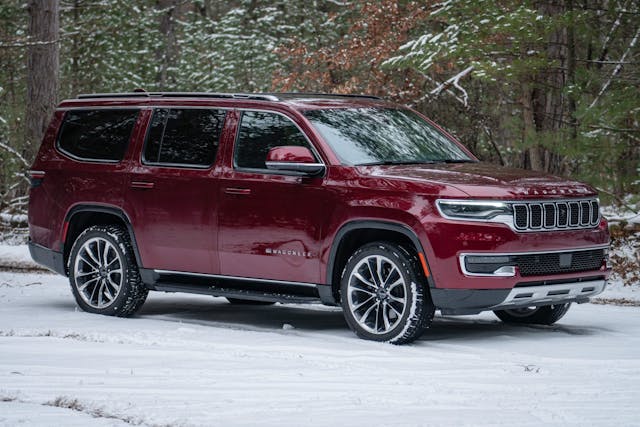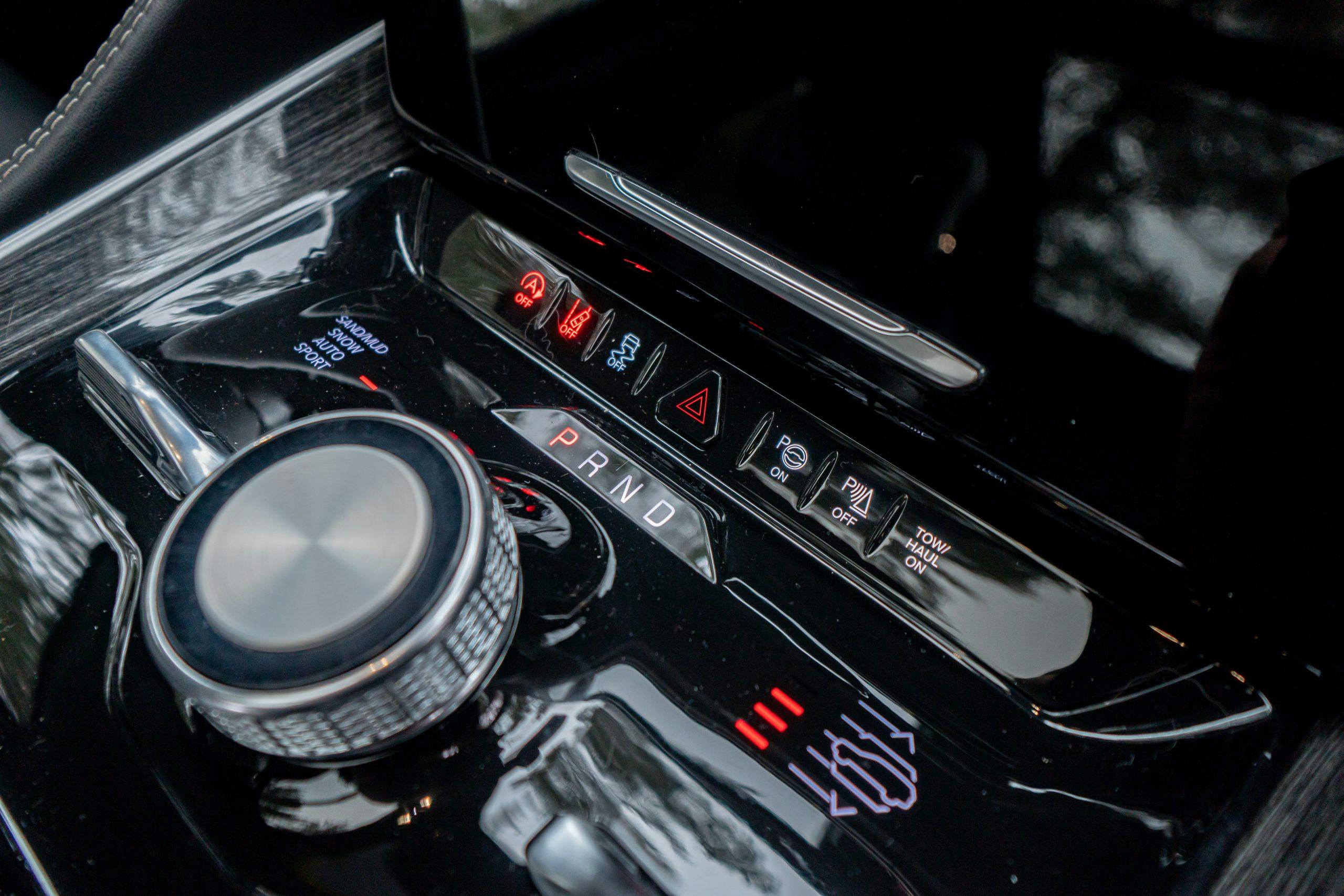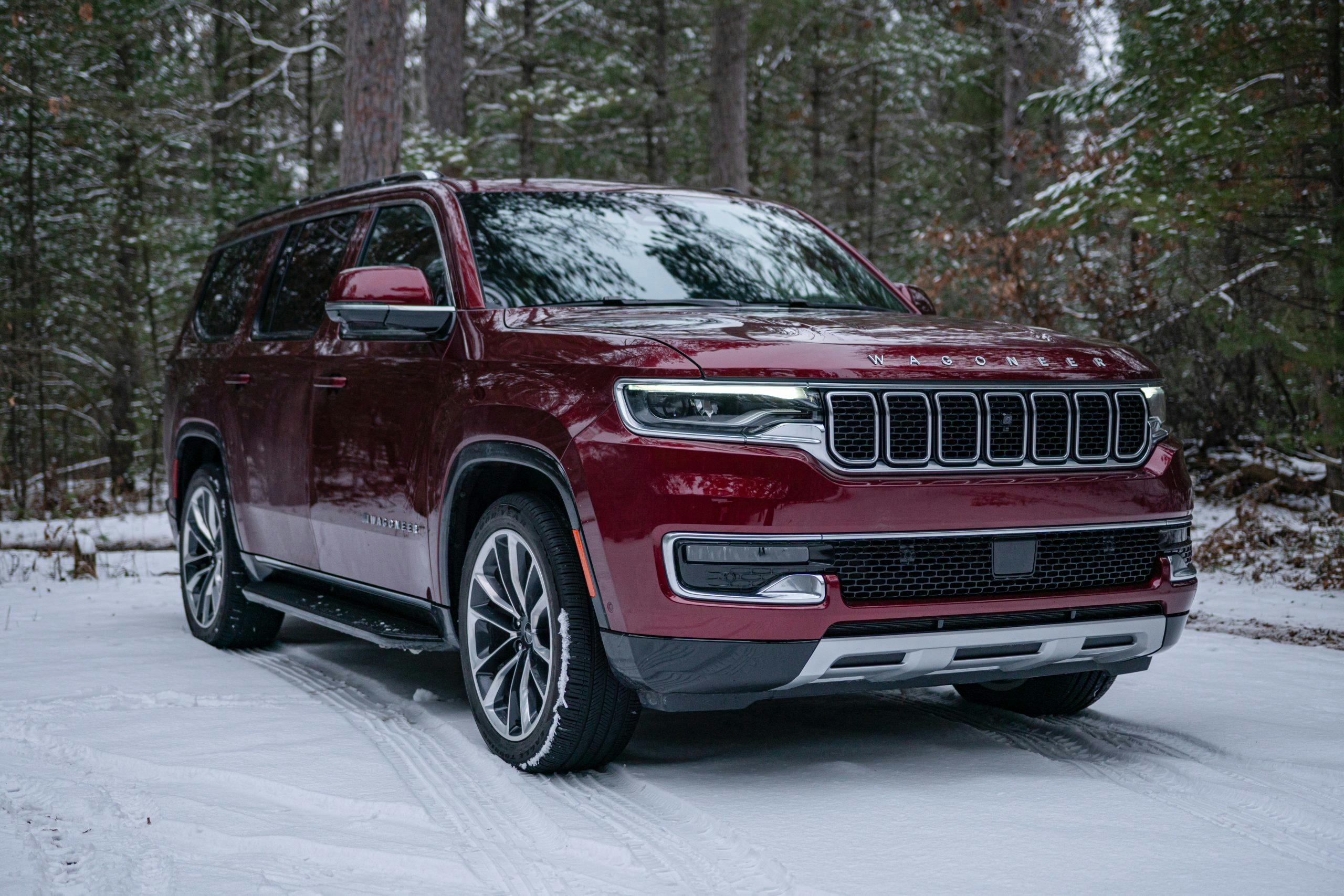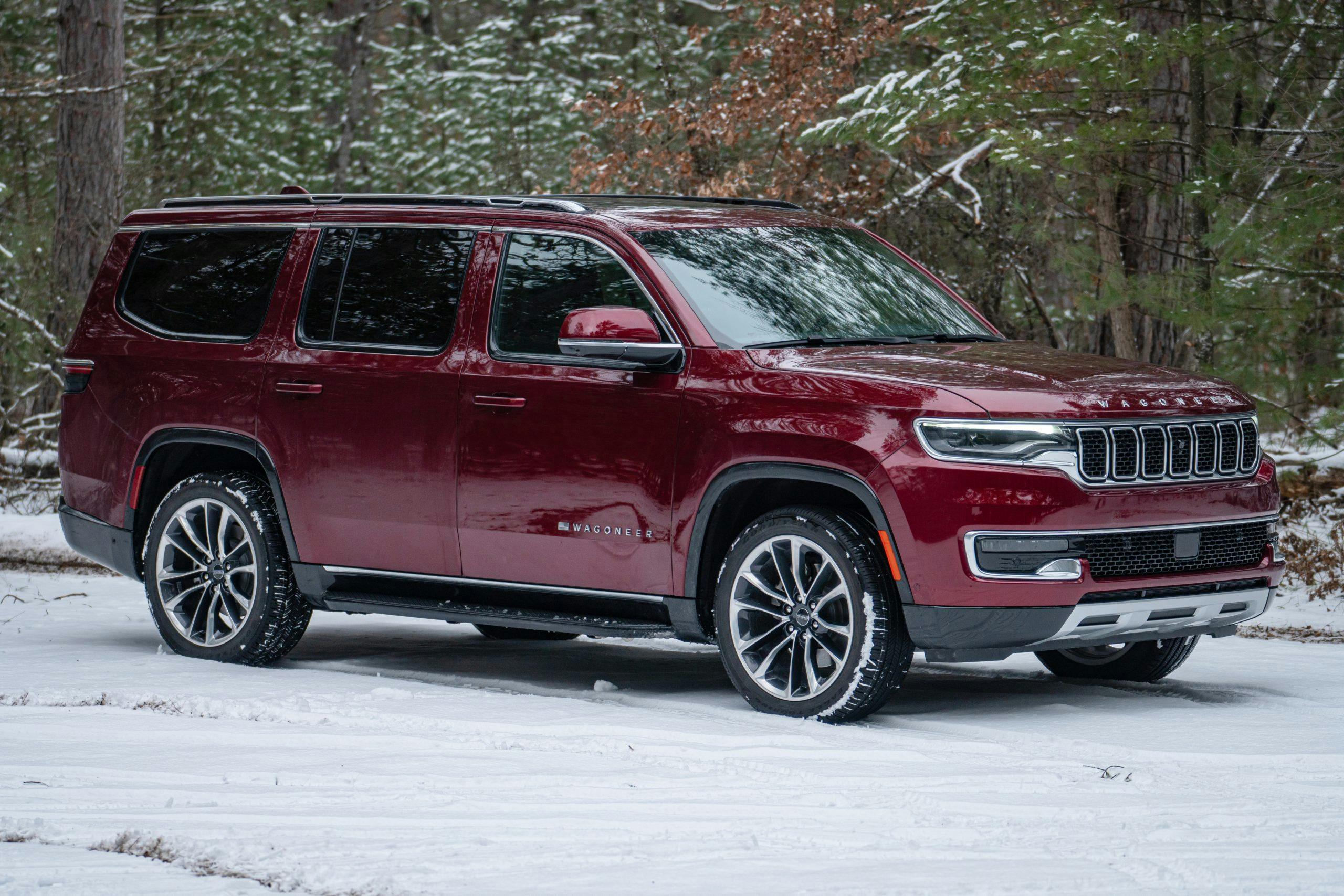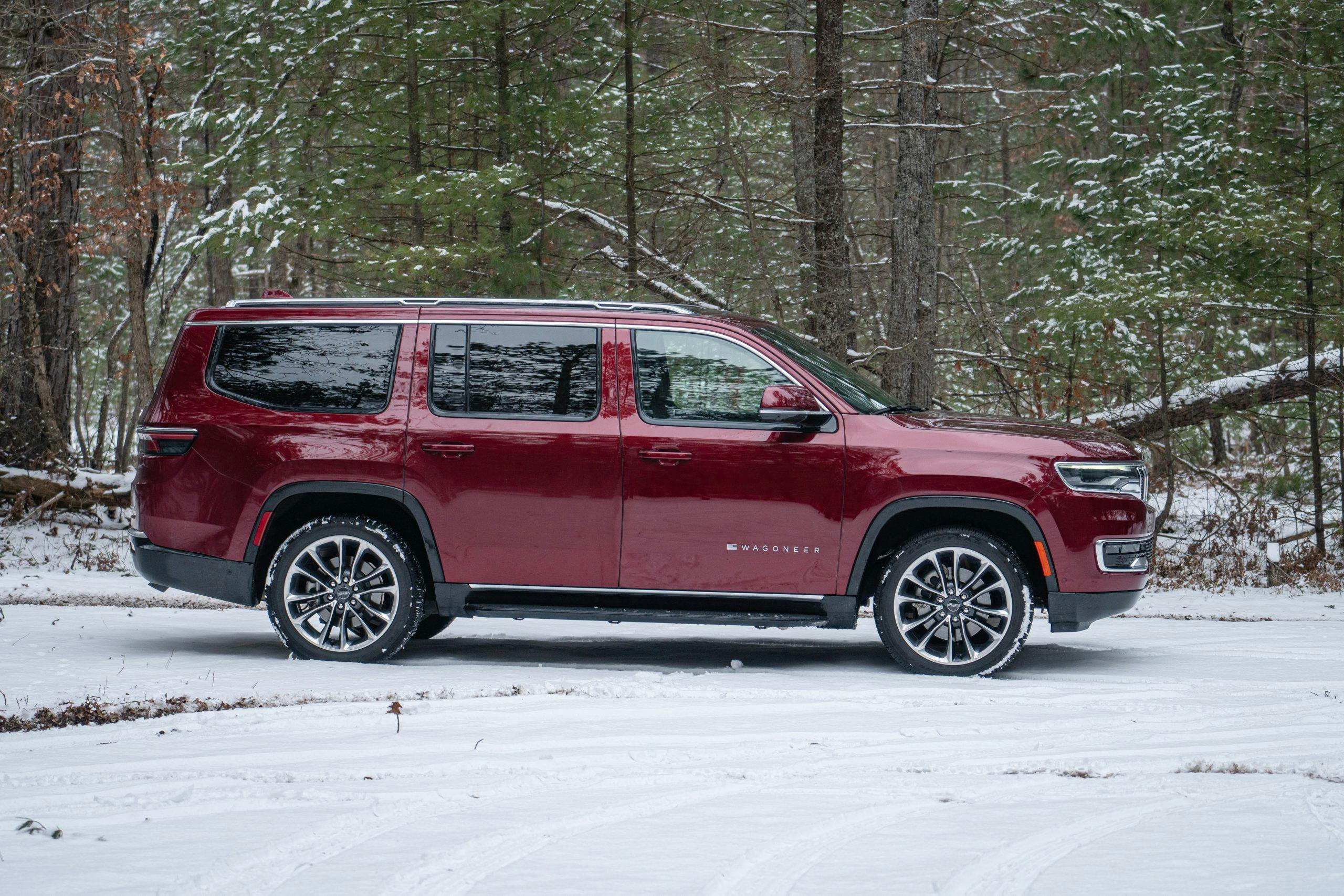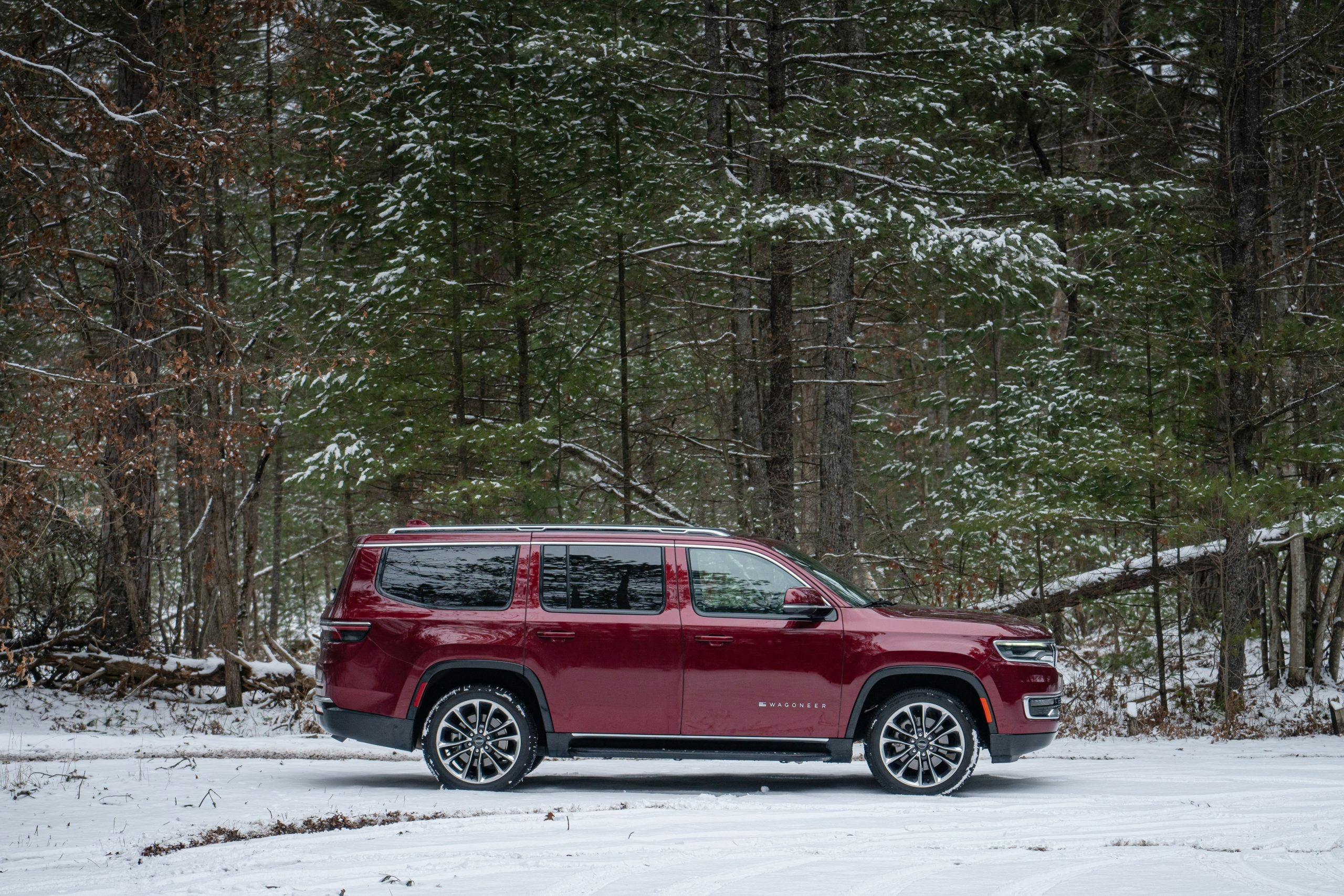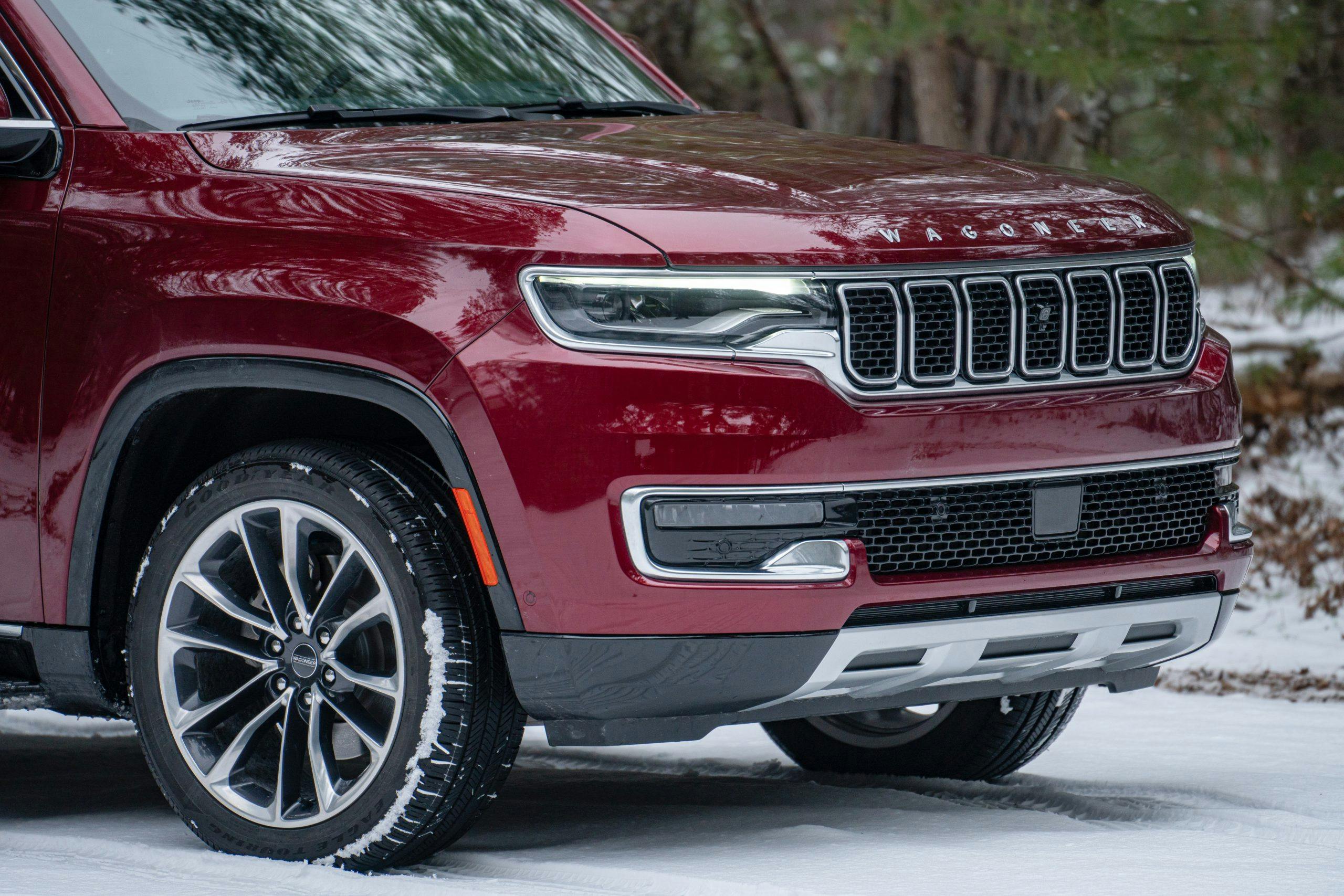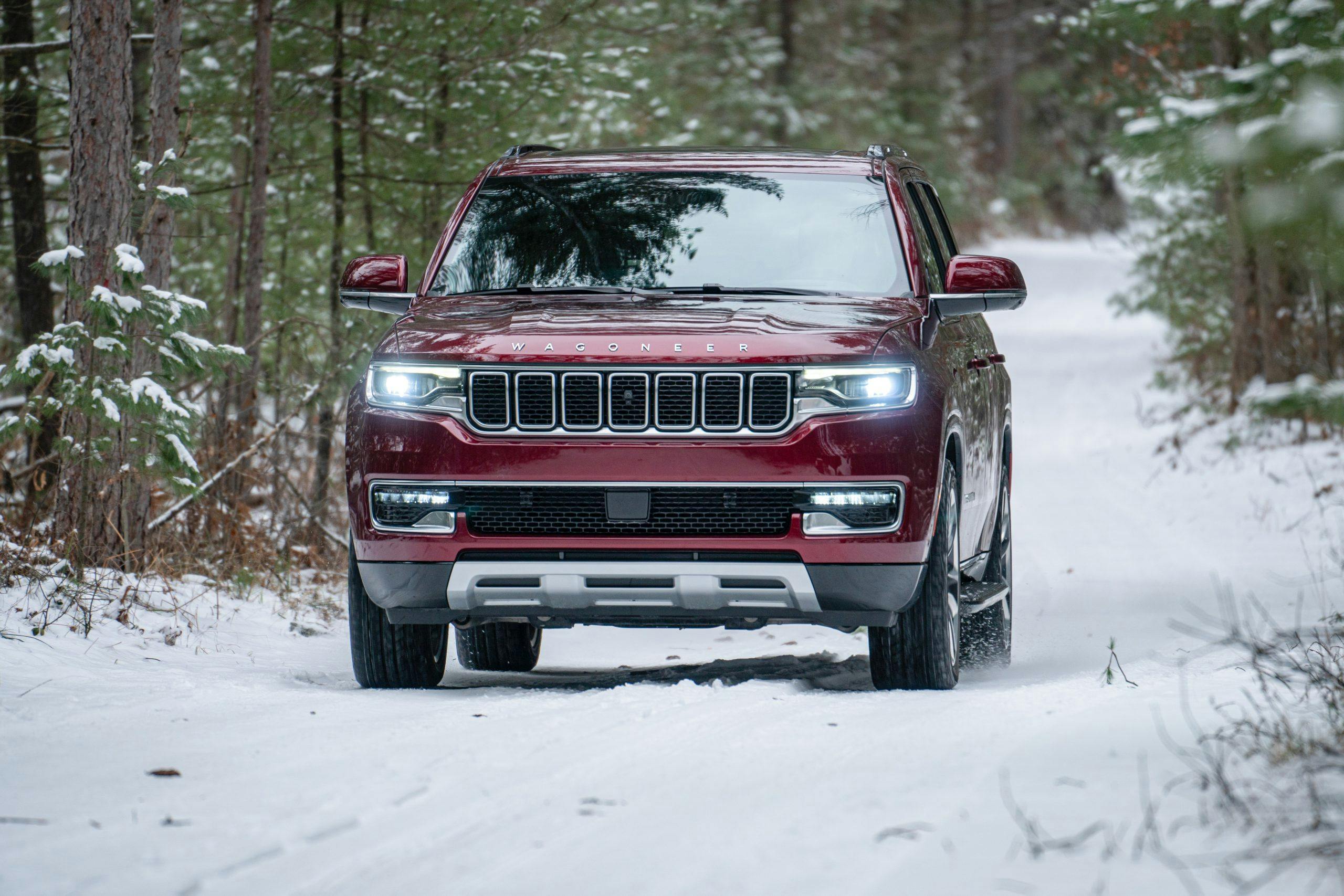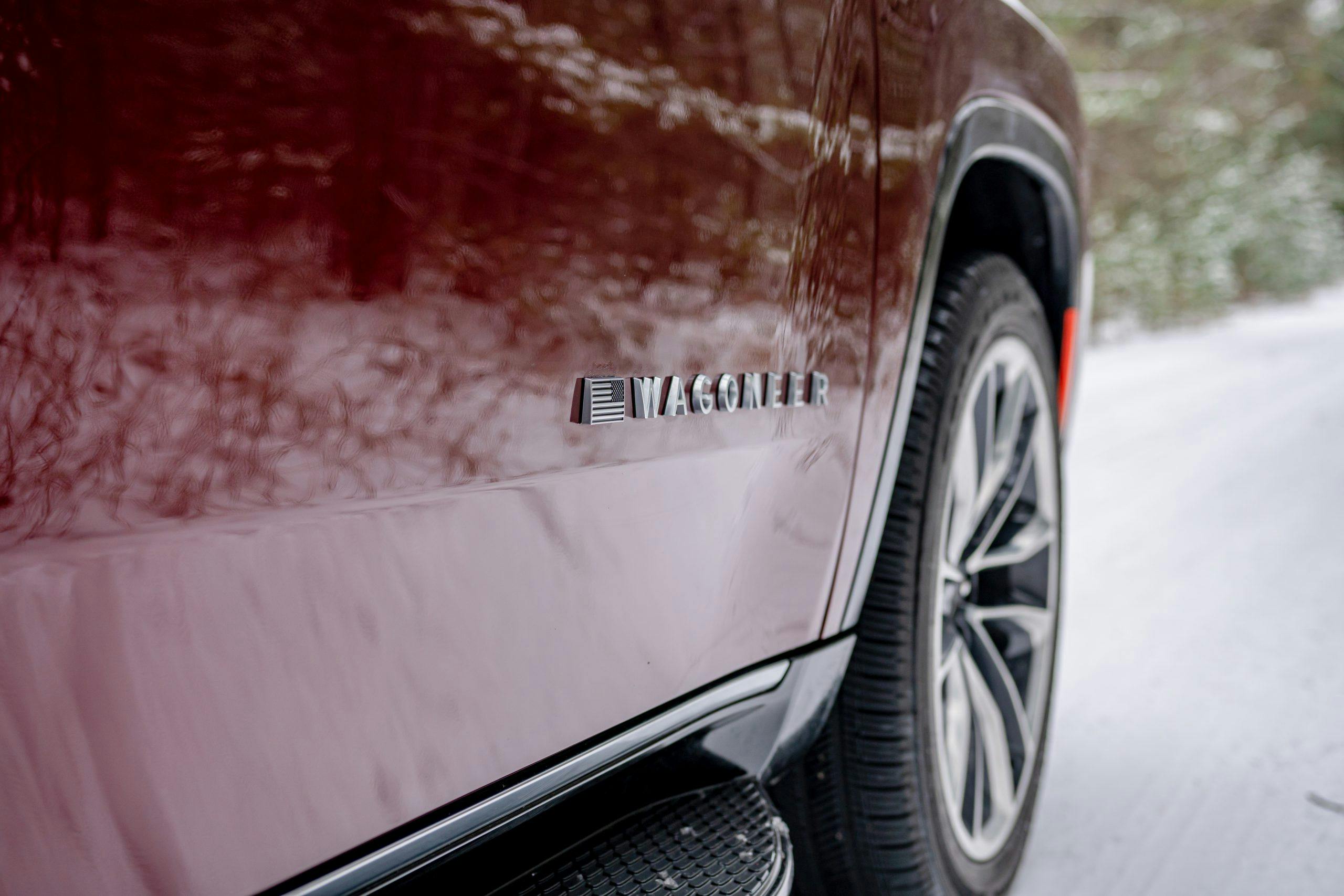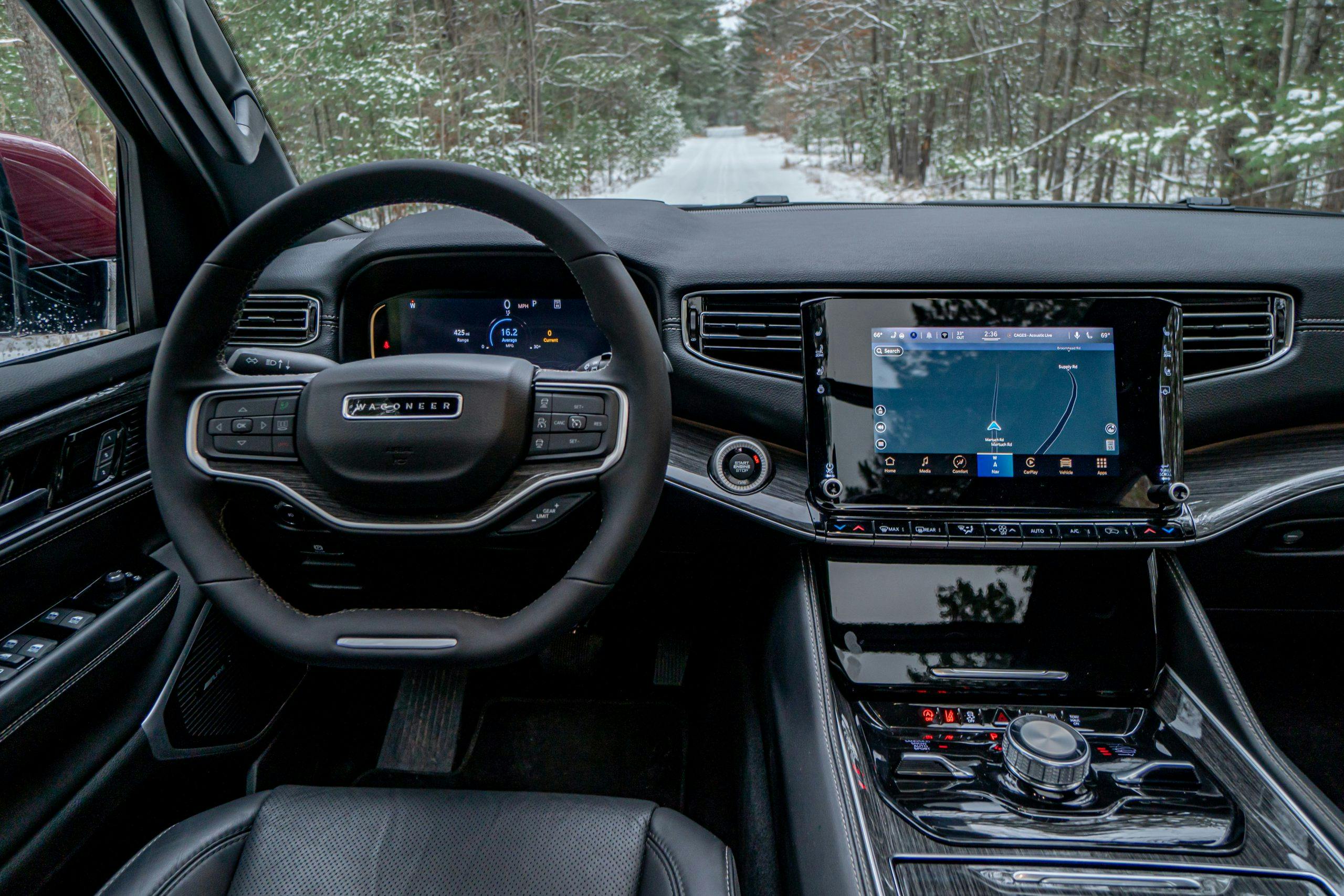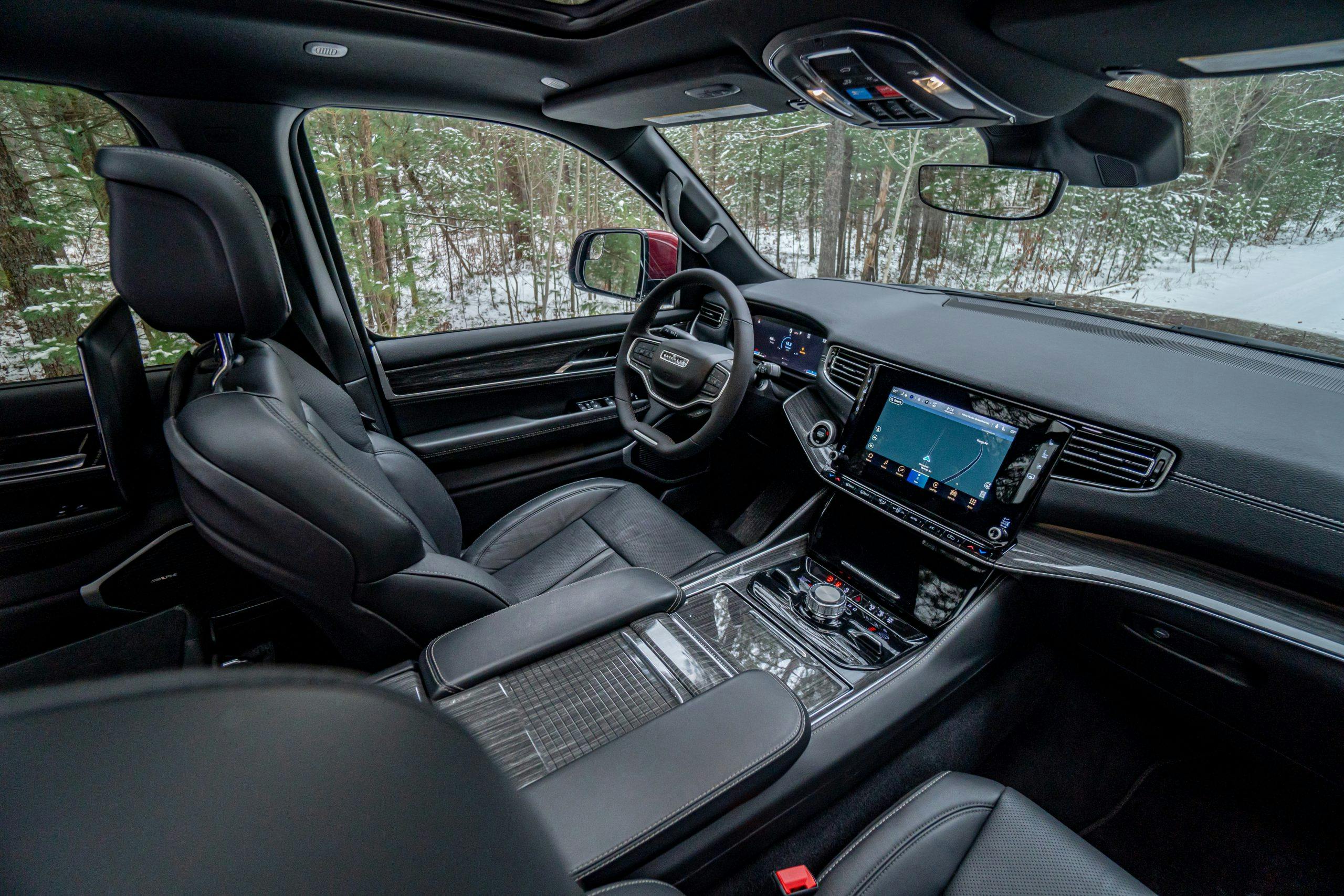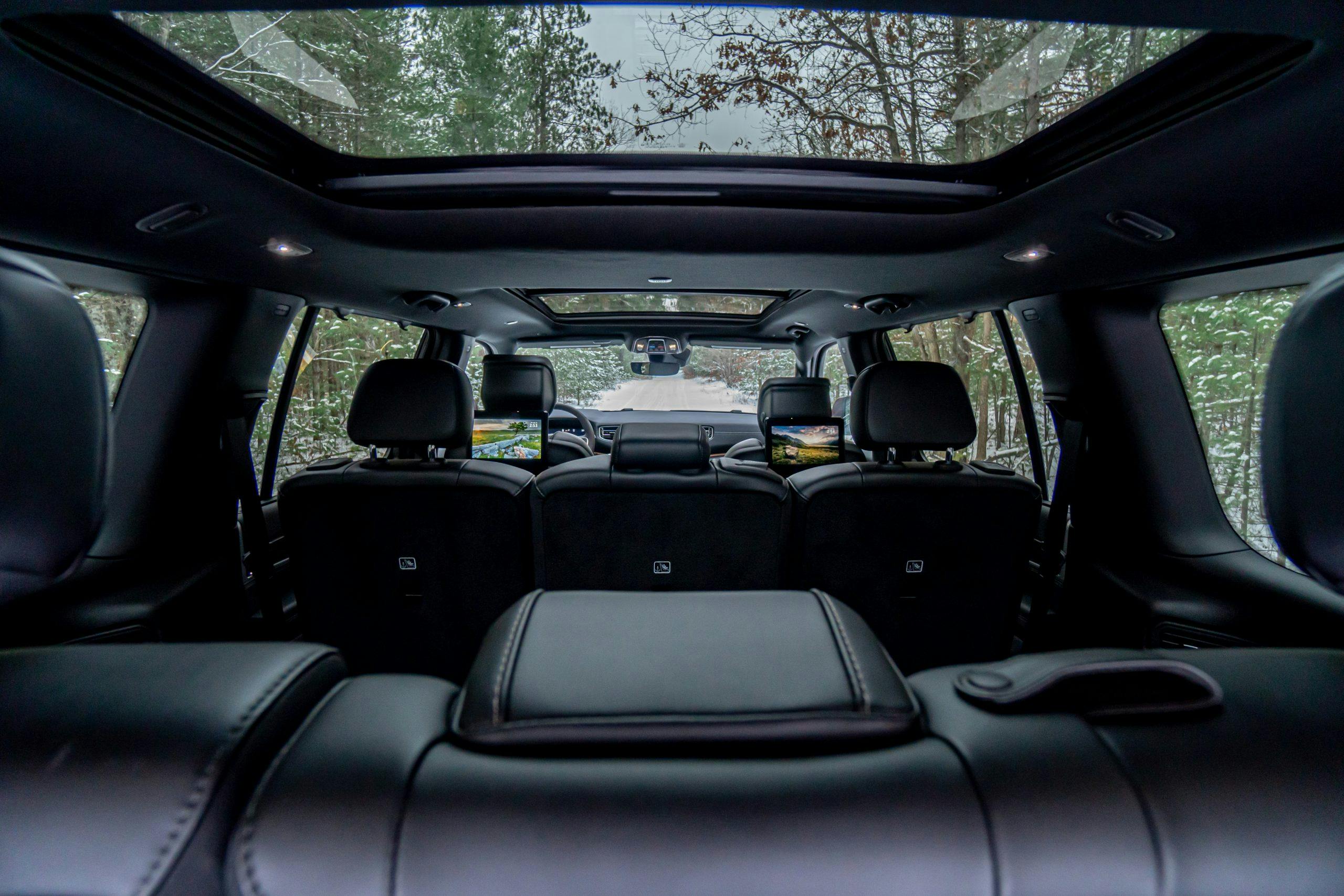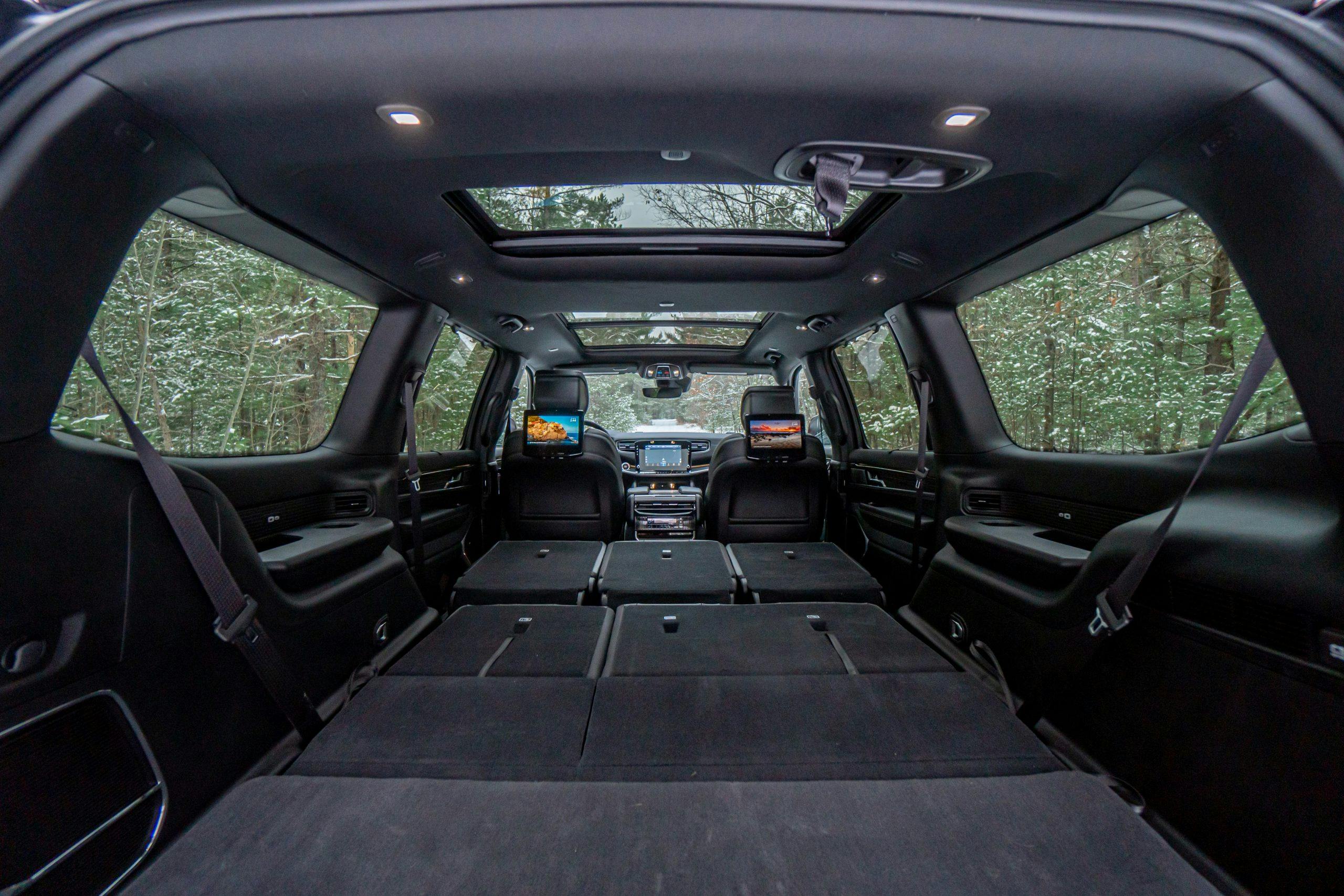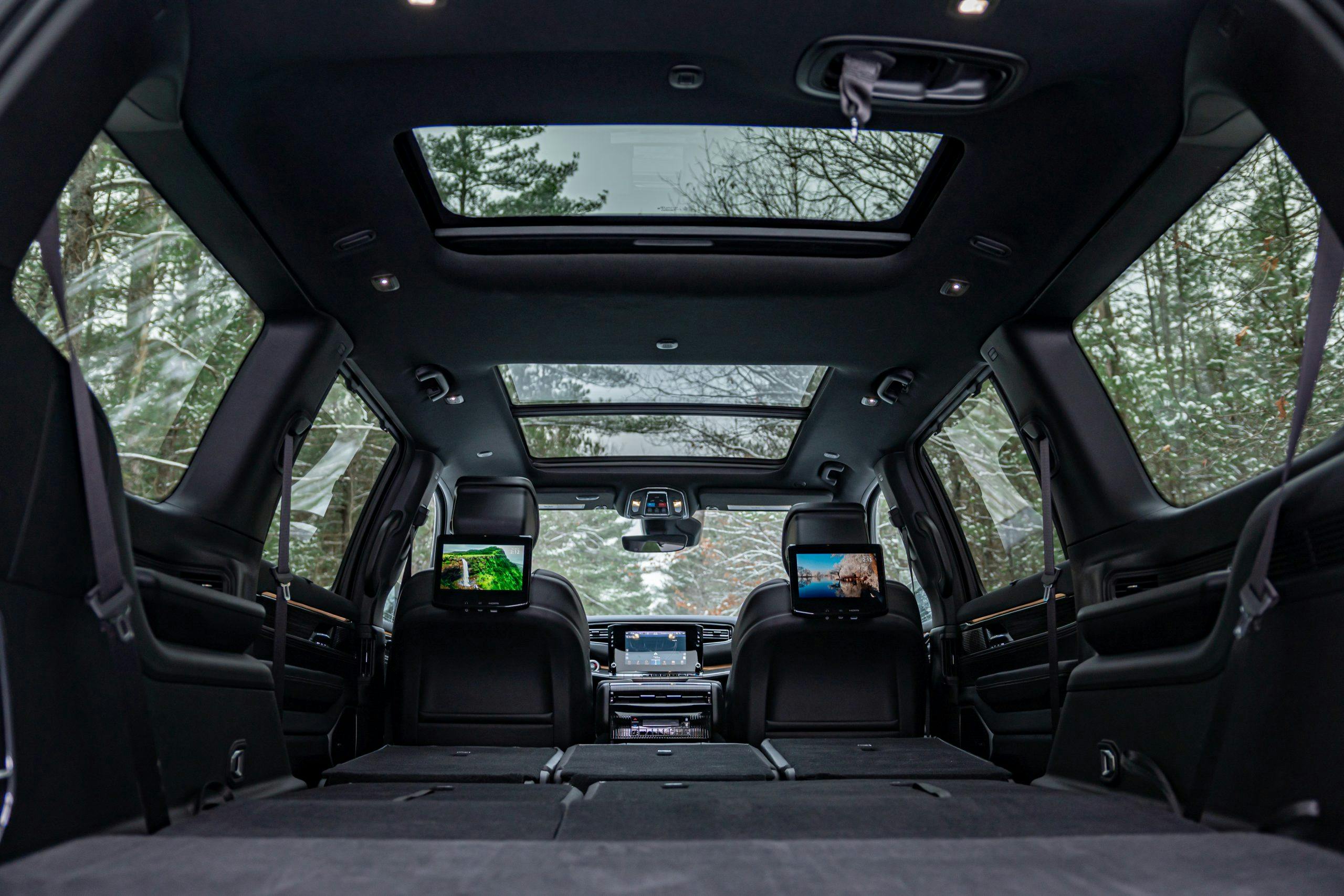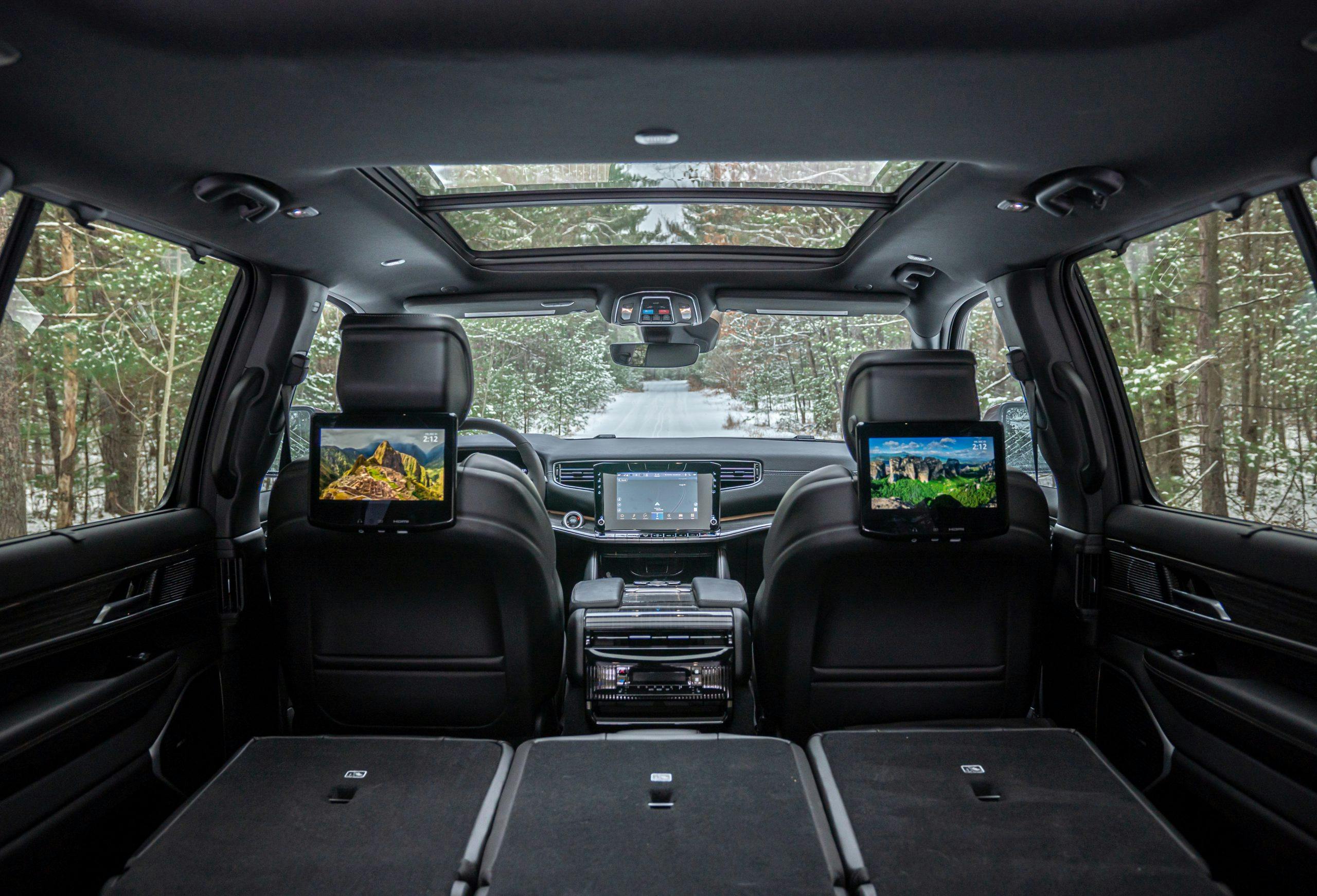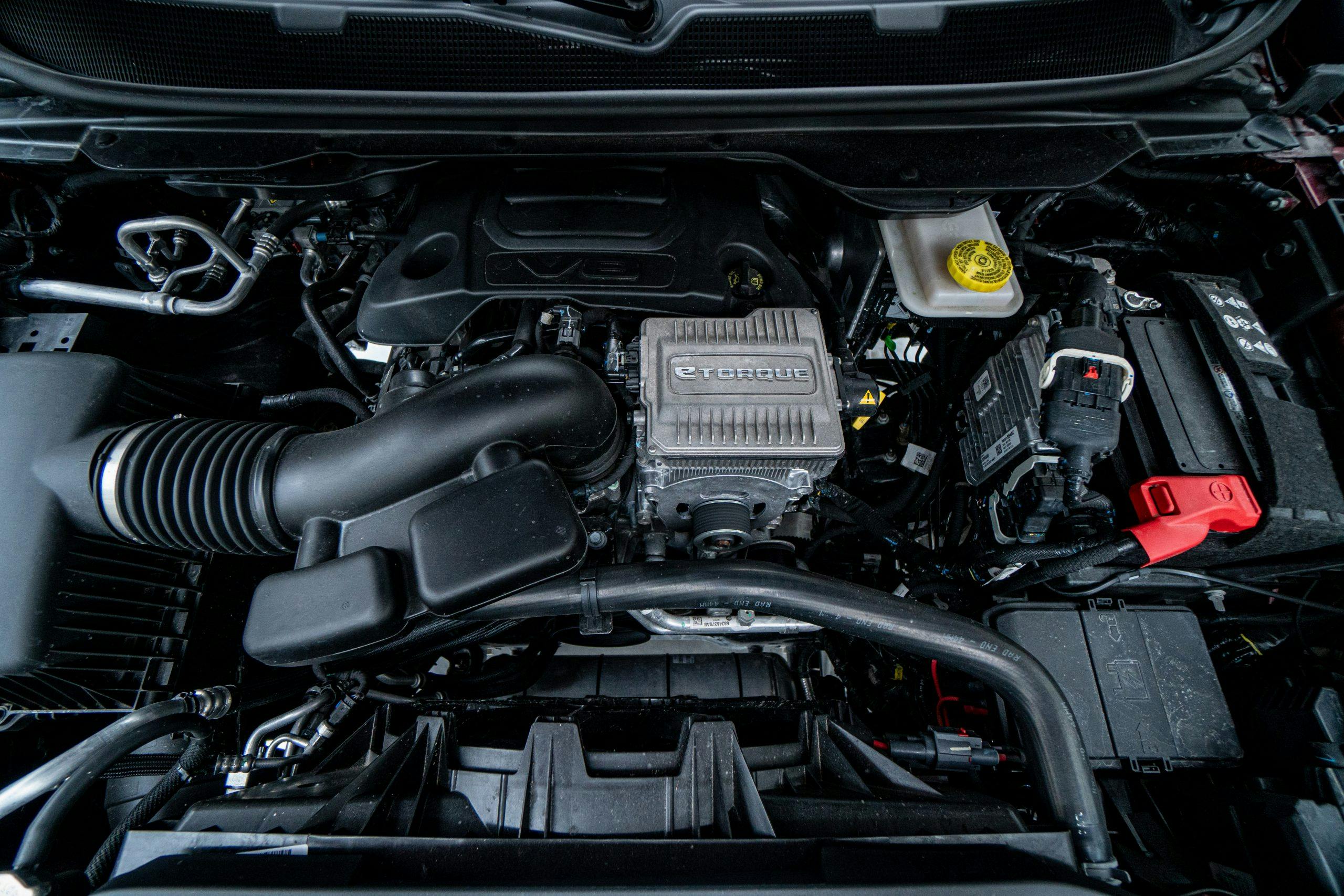Review: 2022 Wagoneer Series II 4×4
The virtues of the average minivan are undeniable, but many of today’s parents simply don’t care. They’ve turned to large crossovers to haul kin and kit. Many often go straight to the XL aisle, landing some truck-derived mega-ute for family transport. In the upper echelons of this segment, carmakers compete fiercely for serious dollars—and serious profit margins.
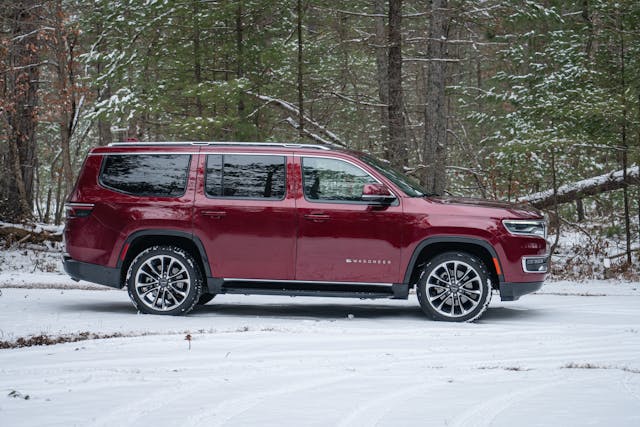
Jeep has long been absent from this arena. That absence ended late last year, with the arrival of the Wagoneer and Grand Wagoneer. Confusing names aside—the two trucks are the same size and can be hard to tell apart—each brings a compelling mix of size and swank. And one mix is decidedly more compelling.
My first drive of the top-dollar Grand Wagoneer Series III showed that the Jeep can carry enough swagger to challenge the class kings from Cadillac and Lincoln. By price alone, the more affordable, entry-level Wagoneer competes with high-trim GMC Yukons and low-trim Lincoln Navigators. Does the Wagoneer’s bulk still work in the real world, minus the flash? I took a week of time on Michigan’s highways and byways to find out.

Our test truck, a Wagoneer Series II 4×4, carried a base price of $73,845. As-tested, it clocked in at $83,425. For context, this mid-trim model stickered for a mere five dollars more than the fully loaded Yukon Denali we tested late last year. The Series II 4×4 isn’t even the top of the Wagoneer line—there’s one more trim level above it. The $9580 in extras on our maroon example included three key options: the convenience group ($3995), which adds a head-up display, a 360-degree surround-view camera, automatic high-beams, and Quadra-Lift air suspension; the premium group ($2995), which brings a tri-pane panoramic sunroof, adjustable roof-rail crossbars, and 22-inch polished alloys; and the rear-seat entertainment group ($1995), which adds a pair of 10.1-inch, second-row seatback screens and an entertainment system loaded with Amazon Fire TV.

Again, the Wagoneer looks virtually identical to its grander sibling. The biggest indicator is the location of the hood badge: The entry model carries its name on the paint, just above the grille; the Grandie puts the word actually on the grille plastic, tucked under sheet metal.
Other differentiation: Grands offer standard two-tone paint (a color-matched roof is an option), while Wagoneers are strictly monotone. Fascia chrome is more lavish on the Grand. That’s basically it. A layman passing either model on the road will simply note that the owner went full big, Jeep style.

As expected, on the wide-open highways of mid-Michigan, the Wagoneer feels no larger than your average pickup. The Jeep is 2.6 inches wider than a Yukon, but given that it’s also nearly seven feet across, what’s a few extra inches? Surprisingly, that added width doesn’t do much for cargo space. The non-XL (read: short-wheelbase) Yukon offers 6.2 more cubic feet of cargo volume aft of the first row, and its overall length is 4.7 inches shorter. Nevertheless, with the second and third rows of seating dropped, the Wagoneer handily hauled large packages (your author recently purchased a new TV) with ease.

The cabin is comfortable, but our tester’s Global Black (Attention, Jeep marketing: What does that even mean?) cabin carried neither a sexy name nor any sense of dazzle. Global Black is one of just two available interior colors; the other is a cold gray/white blend that Jeep calls Rock Salt. This is a shame, because the forms and layout here beg for rich colored leather and lush wood inlays, both of which are available on the Grand Wagoneer. In other disappointments, our test vehicle featured a few embarrassing fit-and-finish issues, like trim misalignment on the dash. Bright spots are obvious. This is a pleasant place to be, and the small sliding cubby atop the center console cover is perfect for wallets and phones. The comfy padded armrests made long-distance driving a cinch. The gorgeous, knurled-aluminum shift dial would feel at home in a Bentley.
Predictably, power is by Hemi. Where the Grand Wagoneer gets a lopey 6.4 borrowed from the heavy-duty Ram pickup, little brother makes do with less grunt: a 5.7-liter Hemi sourced from the light-duty Ram, complete with Stellantis’ 48-volt eTorque hybrid system. Output rings in at 392 hp and 404 lb-ft, and the eTorque’s belt-driven starter/generator can provide up to 130 lb-ft of instant twist from closed throttle, a big help when getting off the line. An eight-speed ZF automatic is the sole transmission choice, and our tester sported a single-speed transfer case for the 4×4 system. (A two-speed case is available, but you have to tick the box for the Jeep’s $2295 advanced all-terrain package.)

Spoiler: The 6.4 is the better of the two engines. The Wagoneer’s V-8 never feels underpowered, but the hybrid system’s calibration and throttle/brake blend can feel a tad crude. Crawling through traffic tends to be an exercise in anticipating the hand-off between rolling regen braking and driver brake application, and this awkward behavior can make snowy highways stressful. The interplay between soft air suspension and clunky regen more than once produced weight shifts dramatic enough to break traction.
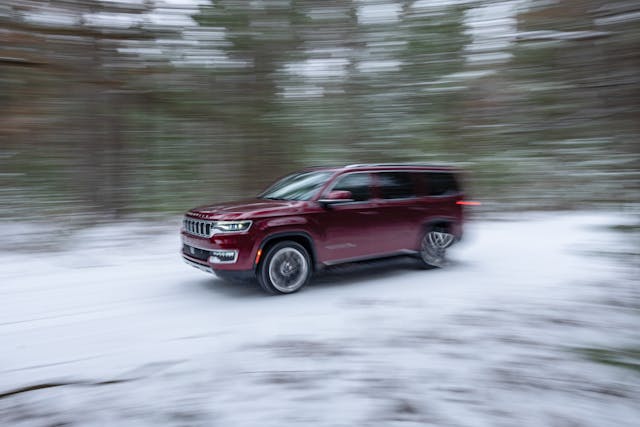
With clear roads and long miles ahead, the Wagoneer plays concrete-pounding couch with aplomb. The acoustic laminated windshield and front-window glass help make 80 mph sound like 18, and the heated/ventilated seats are suitable thrones for a truck this pricey. Less befitting is the nine-speaker Alpine sound system. There’s ample power and clarity on tap, but the system seems under-appointed when you realize the same money in a Yukon Denali lands you a 14-speaker Bose setup.
One of the greatest disappointments with our Grand Wagoneer test was the erratic behavior of the truck’s UConnect infotainment—not least because that system is so good in other Stellantis products. Thankfully, those preproduction gremlins have been vanquished, and the experience here is excellent, the best in the segment. Compared with the Grand model, Wagoneers settle for a smaller center screen (10.1 inches vs. 12), but the smaller screen is no less intuitive. Those tall flanks make that 360-degree camera a must when parking, and while factory settings bury that function a few menus deep in the screen, you can easily drag it to a favorites bar in the top corner of the display. Do that before you even leave the dealer.

To play in this space, both Wagoneers had to accomplish two things. First, they had to be big. Job done: In terms of size, each model slots nicely between the competition’s normal and long-wheelbase offerings. (A longer Wagoneer is rumored to be coming; don’t be surprised if that model handily eclipses the Yukon XL’s 225.2-inch overall length.)
Second, the Wagoneer had to be a Jeep. Whatever America believes that word to mean. Perception is everything when you’re writing a check this stout. Going by street reaction, the whole “premium extension of the Jeep brand” thing, as the PR materials put it, is still a bit fuzzy for most of America. The Wagoneer name began life in the 1960s as specific model and is now a multilayered brand within a brand, and that might feel unnatural to those who warmly recall the wood-clad Wagoneers of old. But maybe that’s okay. Jeep is probably the only mainstream marque with enough cachet to make a move like this work.
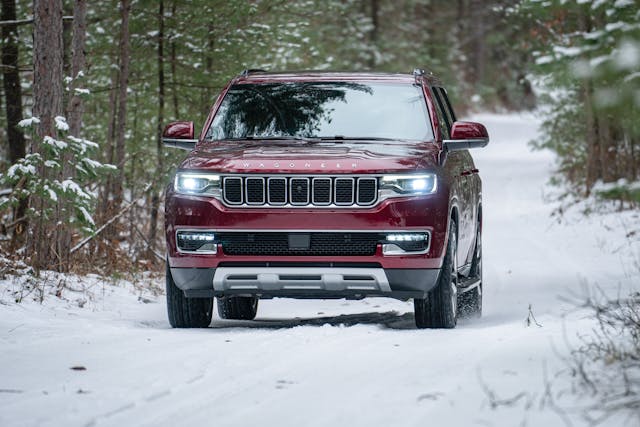
If all this makes sense to you, then godspeed. And spring for the Grand if you can. Make it a Series II to get access to the Blue Agave interior. Add the premium group ($3995) to get the McIntosh-branded stereo, and tick the box for the towing package ($995). That spec feels more worthy of its price ($102,430) than my tester did at 83 grand and change.
Nevertheless, expect both models to have serious staying power among the right customers. At the moment, this segment is a matter of taste. The Escalade’s massive OLED screen may seal it for some. Others may fall for the Navigator’s palatial cabin and broad color palette. The glory-days name might steer others to the Grand Wagoneer. Either way, if a big rolling bunker is simply too alluring to resist, we’ve got good news: You’ve never been more spoiled for choice.
***
2022 Wagoneer Series II 4×4
Price: $73,845/$83,425 (base/as-tested)
Highs: Intelligent interior with enough storage and seating to haul anything shy of a soccer team. UConnect is back to its brilliant ways. Some folks will say you bought a Jeep.
Lows: Awkwardly calibrated hybrid system. Polarizing lines. Drab colors inside and out. Some folks will say you bought a Jeep.
Summary: A Wagoneer in the high five figures feels less convincing than a Grand Wagoneer at six. If it’s gotta have seven slats up front, pay for the fancy one.
